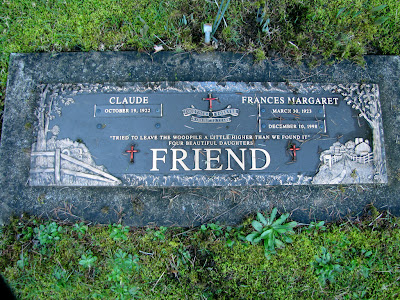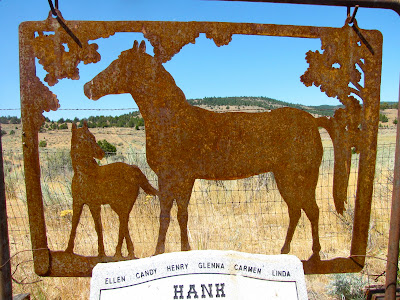 |
| Arivaca Cemetery |
This was my first visit to the Southwest, much less the Gadsden Purchase. They play at being Mexican down here and they give their streets and developments Spanish names, like Rancho del Cerro or Paseo de Chino, and they like to deck out in turquoise and silver; but it’s the same people who pretend they’re Hawaiian or Montanan or whereveran. To be fair, I was south of Tucson strung out in a blossoming oasis of old people, tens of thousand of people fifty-five or older. Their favorite sport is bocci where they roll the balls along artificial turf instead of tossing them down the alley. You can play it until you’re almost dead. I’ve never seen such a congregation of white hair in my life. If your spouse dies and you’re fifty-two, you’ve got to pack up and leave. I told you it wasn’t forgiving down here. They have small craft shops in the community centers, and if you’re not a resident, they won’t sell to you. Really. I guess there’s not enough craft to go around. If you want tourist ware, try the Indian lady across the street; she can use the money.
Relationships are complex in the West, no less in Arizona than Oregon. We all have Indians and we all have retirees and we all have Mexicans and we all have aging hippies and we all have ranchers and we all have tourists and we all have miners and we all have meth heads and we all have survivalists. And Mormons; we have Mormons. Blacks and Asians on the Coast. Not all equally distributed, to be sure. Nonetheless, wherever you are, exactly who you are is hard to say. We all want to have a voice.
 |
| Elton Waack |
“Oh,” he replied, “they have their own artesian wells; they get it from the aquifer.”
“How long are those wells going to last?” I asked.
“Not as long as they hope.”
And then he talked about how the saguaro are all going to be gone in eighty-years, thanks to global warming. It takes eighty-years for the first arm to begin to appear on a saguaro. Those arms in the air? They’re not hitchhiking; they’re waving goodbye.
Mexicans or Indians, I can’t tell which. They both say they were here before the rest of us. Except the Apache. The Apache came down here in modern times. They let loose after the horse came up from the latifundistas and the gun came down from the couriers de bois. But the question of whose land it is will always resonate. The Mexicans think the whole West Coast is theirs. For them, the border is an inconvenience making it difficult to travel between ancestral lands. Their identity is not tied to a specific spot of land. The Indians, on the other hand, are tied to their reservations whether they live on them or not. Their identity is place-specific. Excepting that now all Indians are Métis, like it or not, and their identity as an Indian is always tenuous and self-defining. Perhaps it’s a matter of language; the Mexicans maintain a national language which unites them all, regardless of their differences at home. At home, regional differences are paramount in self-identity. In America, you’re all Mexican and regional difference are lost on us. Their pan-national language, though, separates them from the mainstream population, which has only a limited window into it. It assumes a form of identity protection in the face of cultural onslaught. The Indian, unfortunately, has nowhere to hide. Even if he or she could remember their native tongue, it would not have been a national tongue; there was none.
Aside from those groups, there are numerous others of many races who have been here for a long time and surely consider themselves as native to the place as anyone else. Their identity comes from where they were born, not where their ancestors were born. And that’s an international human question: what is the relationship between self and place? How many generations do chickens have to lay eggs in the oven before they become buns? Whatever the answer, there’s a lot of crusty folks who are willing to lay their life down to call themselves Westerners.
 |
| McGee Ranch Cemetery |
The number is: whatever you want it to be. The import thing, the Métis say, is whether or not you think yourself a Métis. Well, you say, you wouldn’t be asking the question if you didn’t already think you were a Métis; so, is that enough?
No, say the Métis. Other Métis have to say you’re a Métis, too. If all the guys down at the bar say, “Sure, you’re a Métis with the best of us,” you can pick up your feathers at the union hall. Otherwise you might just be a half-breed. Or an octaroon.
The story of the West is the story of waves of immigrants. And I don’t mean since the wagon trains; I mean since forever. The tribes didn’t pick up and start to move only when the Europeans arrived. From language distribution to genotypes to haplo groups to oral and written histories, we know that the Americas, like the rest of the world, have always been in flux. To a certain extent the questions become ones of from where do the invaders come and how long were they there? Conquering and being conquered is the history of the world. From how far away does an invader have to come before they’re considered foreign and not just neighborhood infighters?
Back to me, again. I’m an aging hippie. I permanently moved to the West Coast in 1969 after visiting a couple times in the earlier 60s. Two of my children and all of my five grandchildren have been born in the Pacific Northwest. Where I grew up now exists as a storybook memory. It’s no longer a real place. Oregon is the only place I know. I think I belong here. I think it’s my place. There are a lot of people like me. We all want our voice. We all think we’re native. Who’s to say?
 |
| Tumacacori Mission Cemetery |
“Hi, where you folks coming from?”
Good looking young guys in crisp uniforms. Nobody wore a hat and nobody wore sunglasses. There was no failure to communicate.
“Arivaca.”
“Uh-huh.”
Where else? The road doesn’t go anyplace after Arivaca, and Arivaca is hardly a place in itself. There’s nothing out that road but Arivaca.
“Actually, officer, we’re smuggling Mexicans.”
One has to assume it’s working, because illegal immigration has dropped eighty percent in the past half-dozen years. Most experts think a different dynamic is at work and that the Border Patrol is no more effective than ever, but that the number of people trying to cross has dropped. Which, frankly, is more realistic.
Nonetheless, when you count all these random checkpoints, the big permanent checkpoints, the squads of police patrol trucks cruising the highways, and the helicopters lumbering across the Sonoran desert, one has to think one is looking at a growth industry gone mad. Do we really need to arm the border at what cost? Must we try and control the ebb and flow of humanity with guns? Why is violence always our solution?
What worries me more: illegal Mexicans or Goldman-Sachs? How come there are no guns holding off Bank of America? From whom do we need protection?
 |
| Arivaca Cemetery |
 |
| McGee Ranch Cemetery |
 |
| Tohono O'Odham Cemetery |
The cemetery’s up a draw leading into the mountains and is blocked by a gate. They’re happy to let you visit the cemetery (or they were happy to let us visit the cemetery), but they’d like the courtesy of being asked. Fair enough. Do stop and do ask and do walk the few hundred yards up the dusty road to the cemetery. The road got traffic on it while we were there, but nonetheless was pocked with numerous animal prints: deer, dog, and large cat. Larger than house cat. It’s a busy desert.
Each grave is delineated by a ring on stones, and they march in regular order underneath a canopy of trees. There more than a bit of whimsy and humor here and it’s devoid of excess sobriety. Just the place to visit on a sunny afternoon; provided it’s not too hot. They tell me…
 |
| Evergreen Cemetery - Tucson |
My advice: if you’re going to die in Arizona, head for Arivaca. You’ll find good company there.
 |
| Mission San Xavier del Bac |







































